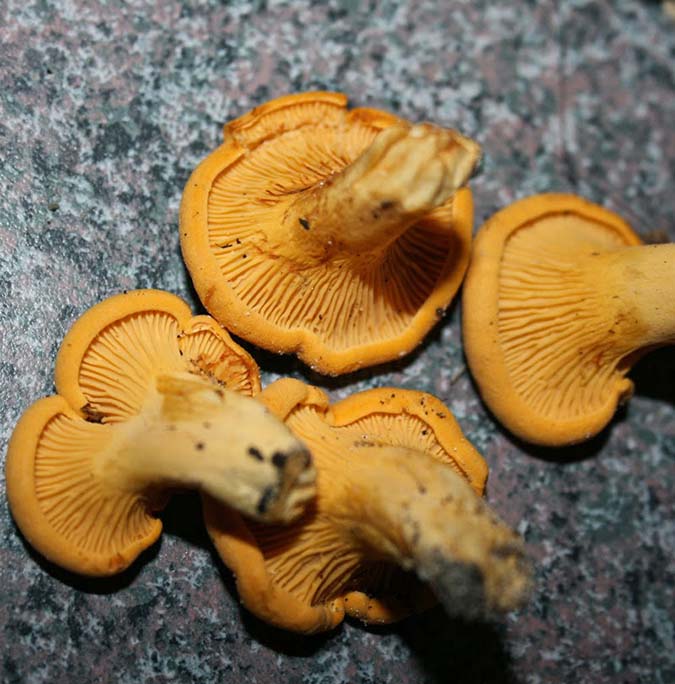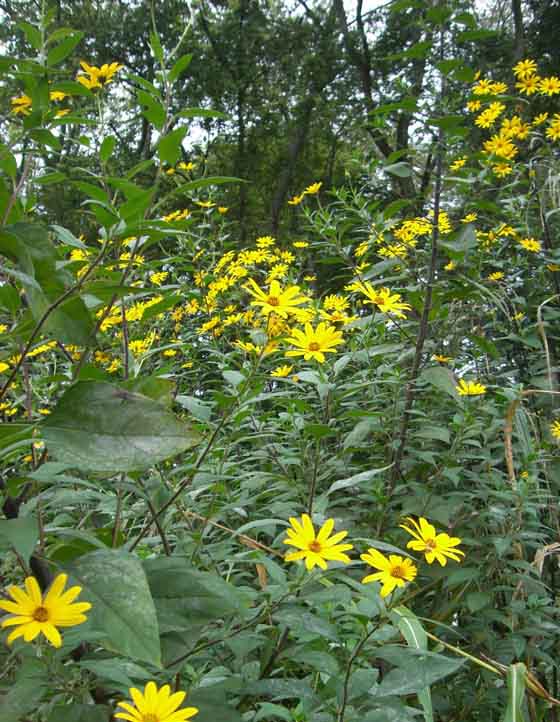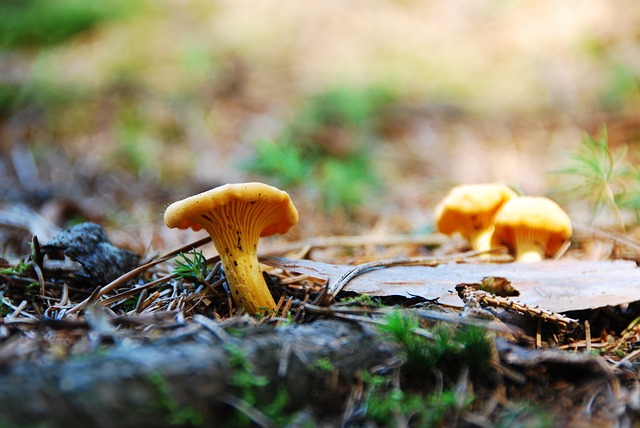C asks about guerrilla gardening for survival and wonders which plants might survive in the wild without much care. Sounds straightforward—until you find out where she lives.
“Hello David,
Hoping all is well with you and yours. I would like to present a question or 3 and see if maybe you can assist me. I’m not finding a whole lot on true guerrilla gardening. I will try to explain. It is really more of a survival type of gardening.
The way I always understood guerrilla gardening was when living way out in the sticks with basically a tent, cave, or some other type of shelter. Taking seed out and making small little gardens, sometimes a couple miles apart. Always around rivers, steams, or other constant water source in case you cannot keep it watered at all times and preferably vegetables that nature takes over and they just keep coming back every year.
Spuds is a prime example of that and plan to test carrots this year if I can. I think peas will come back also. When the pods dry out and hit the ground. If animals don’t get them first. I know for a fact that if I leave a potato in the ground it will sprout up all by itself the next year. Even after tilling the soil and planting something else there. Wonder if beets will come back also. There are certain foods I would love to have out there.
I’ve babbled enough, on to the question(s). If you don’t already know, can you help me find out what type of vegetable will easily go to seed and start growing all on their own the next year. When I move out there again, I can’t live on just potatoes and fish and what few berries I find this time. I need a little better diet this time around. Because I do not plan on coming back to society after a year or so this time out.
I’ve been learning to take seed from fruits and get them growing, so I plan on taking those types of seeds with me also and get some trees going with fruit. I know it will be a few years before I start getting fruit, but if nothing else I can live on fruit just as easily as veggies. But I will need to basically create orchards over time. Because when the deer, bears, and other animals realize there is a sweet food source nearby, I’ll have every wild animal out there at my doorstep. So I want to spread those trees far and wide. Of course, they will likely line every spot I can get near a river above the high water marks. I live in snow country and will be staying in snow country. Montana.”
Let’s see if I can be of some help.
Determining What Will Work in a Guerrilla Garden: Natives First
Though I have no experience in Montana, I do have some guerilla gardening cred.
I have grafted peaches onto wild plums growing on the roadside and planted loquats and yams in empty lots, as well as cassava canes behind a Ft. Lauderdale foreclosure.
Yet one big problem with guerilla gardening in the wild for survival is that most food plants simply don’t want to produce much, if anything, without care.
Before we get into more common species, let’s look into foraging what may already exist, plus expand the population of those edible plants if possible.
The first thing I did when considering C’s question is to look up which native plants in Montana are edible, since native species will often do better than cultivated varieties.
There is a site dedicated to info on Montana plants which looks like a good resource, though you have to pay for access to the complete database.
There are also multiple books on wild species, including Linda Kershaw’s Edible and Medicinal Plants of the Rockies and Foraging the Rocky Mountains by Lizbeth Morgan.
Thomas J. Elpel and Kris Reed also have a guide titled Foraging the Mountain West: Gourmet Edible Plants, Mushrooms, and Meat.
Wherever I’ve lived, I’ve tried to learn the wild edible plants.
I have a good collection of Florida foraging books that served me well in the Sunshine State. (In my current location, I haven’t had as much luck finding resources—often due to local names and difficulty with the language. I may have to write my own.)
If I lived in Montana, I’d do the same thing: I’d start a collection of local plant-foraging books and learn the species that were already available.
How does this relate to guerilla gardening?
Once you know what grows wild, you can encourage more of it. When I lived in Florida, I would collect seeds of edible species and scatter them. I would also identify locations where good edibles grew and watch the area.

These chanterelles grew in a 3-acre lot behind my house in North Florida. They appeared around the same tree, year after year.
When I harvested, I made sure not to over-harvest. If possible, I would encourage the populations by spreading them to similar locations. I buried mushrooms in the mulch around my yard and scattered their spores everywhere.
Ponds are a good place to hunt and . . . encourage . . . wild edibles. Cattails are a well-known food source, but duck potatoes may be even better for survival, and they also grow in Montana.
Guerrilla Gardening Cultivated Crops
I have experimented with growing plants with almost no care. C is right that it’s a good idea to grow in wet areas if possible, as water is the main limiting factor on plant growth. However, there are two other other huge issues with planting in the wild:
- Weeds—particularly vines like bindweed—can overrun plants rapidly without a gardener working his or her magic.
- Deer, rabbits, and other wildlife can take out wild-planted crops in moments.

Jerusalem artichokes create an abundance of tubers with almost zero work.
Think about how hard it is to grow a normal garden in your backyard. Every year, something comes for your plants—whether it be potato beetles or a wandering woodchuck, rats in your corn or a neighbor’s chickens tearing up a newly planted bed of peas.
Hornworms, squirrels, stinkbugs, slugs, crows, ants . . . .
C notes this issue. The deer, bears, etc., will come!
It’s a wonder anything survives.
Nature is mean. Almost every plant you see is the one survivor out of thousands or millions of seeds and seedlings that didn’t make it.
Dandelions scatter thousands of seeds for the few dozen that pop up in your lawn. Maples drop buckets of whirling seeds and scant few find good growing conditions and survive to adulthood.
C is already experimenting with potatoes and beets, which is good. Keep experimenting and experimenting with everything you can find and test.
One option that I know will establish in the wild is Jerusalem artichokes. They will continue to grow for years and years and can survive lots of cold. I don’t find them to be particularly digestible, though. Your mileage may vary.
Growing trees in the wild is a good idea, but I would add nuts along with the fruit. Permies.com has a thread on nut-growing in Montana which contains useful info. It’s going to take a long time to get fruit or nuts, especially in Montana’s climate, but I still think it’s worth planting them.
The Wrap-Up
In conclusion, my advice boils down to this:
1. Learn the wild edibles
2. Cultivate more of the wild edibles
3. Experiment and experiment and experiment
I would also research what the Indians did and how the early settlers survived. Personally, I think if you really want to grow enough calories, you’ll have to have one garden for a kitchen garden that is highly tended and protected, and then grow and test guerrilla gardens outside of that. Planting a guerrilla garden for survival may be possible, but it’s hard to pull off.
The cassava I planted behind a foreclosure eventually died without giving me anything. The yams in the empty lot stayed alive, but didn’t give me usable roots the first year. Then I moved, so I don’t know how they turned out. The guerrilla-grafted peach is probably eaten by plum branches at this point.
It ain’t easy. Good luck.
What Do You Think?
What suggestions do you have for successful guerrilla gardening—in snow country and beyond? Let me know in the comments below!
____________
This article was originally published on January 21, 2019.
The Grow Network is a participant in the Amazon Services LLC Associates Program, an affiliate program designed to provide a means for our team to earn fees for recommending our favorite products! We may earn a small commission, at no additional cost to you, should you purchase an item after clicking one of our links. Thanks for supporting TGN!
David The Good is a Grow Network Change Maker, a gardening expert, and the author of five books you can find on Amazon: Compost Everything: The Good Guide to Extreme Composting, Grow or Die: The Good Guide to Survival Gardening, Totally Crazy Easy Florida Gardening, Create Your Own Florida Food Forest, and Push the Zone: The Good Guide to Growing Tropical Plants Beyond the Tropics. Find fresh gardening inspiration at his website TheSurvivalGardener.com and be sure to follow his popular YouTube channel.











COMMENTS(5)
Tomatoes come back from seed, year after year, in Alabama. I get them in the compost heap and around the chicken pen especially so they might not work due to needing too much fertilizer.
Thanks David! I’m always into guerrilla gardens and little, secret plant nooks. Although, I’m usually moving around wild plants that were already here, but into a handier spot. Once you give them a little nudge to recover from a transplant, they don’t really need any help thriving. Blackberries, mulberries, persimmons, prickly pears, maypops, etc. And you can have a secret garden right in your front yard if nobody else knows its edible.
I’m all about those Jerusalem artichokes too. Some day my neighbors will find out and come for me. But until then, I find that cooking helps a lot with their digestive peculiarities. Notice I say “helps”, not “solves”. Carminative herbs also help.
On a side note, I’ve got pineapples and ginger plants growing here in Arkansas. Your book, Push the Zone, inspired me to give it a try. I bet several of the strategies in there could be adapted to guerrilla gardens.
Thank you for the great article, David! I also have access to a chanterelle patch and am happy to know I am not the only one spreading the stubby stem ends to new areas, with the hope of having access in the future to even more chanterelles.
Around here (metro Atlanta area), local city and county parks are a good source of some edibles, like pecans in the fall and blackberries in early summer, that most people either don’t know about or don’t take time to harvest and use. I consider those parks an important resource.
In the spirit of guerrilla gardening, I have planted pecans in clearings in wooded areas of the parks, with the hope that in 15 or so years they will produce food for a future gardener/forager who wanders through. If the woods get bulldozed for a strip mall, the effort will have been wasted, but it doesn’t hurt to hope and to try. – Amy
I haven’t had much experience with guerilla gardening but when I did try recently my experience was the critters likely ate the seeds and/ or the plants shoots that did emerge. I had no luck whatsoever.
I’d have to concur with David that if you want or need guaranteed results a protected garden is a must. Then experiment as much as possible depending on the availability of excess seeds [the quantity you are willing to loose should you have no success].
My other thoughts are around the seeds ‘C’ had anticipated taking to their new location. Fruit trees grown from seed can take a long time to produce anything edible. If at all possible my thought would be to have the seeds germinate and start growing them now. They could be a year or two old and still rather small and manageable to carry if wrapped in wet newspaper inside a plastic bag as bare rooted plants. It would mean you’d be years ahead of the curve and with a bit of a protective barrier from deer, rabbits and the like, they may be more inclined on survival.
Phase 3 could be planting out the remainder of the fruit seeds; some in or around your protected garden as insurance, and the rest further away.
Thanks David the Good for another great article!
Collards, Kale, Aztec Spinach, Arugula, lettuces, and Tomatoes,… Raspberries could take over the world and not much eats them or bothers them. Beets, parsnips, garlic, potatoes, onions are in the ground so less obvious for critters to grab. Trees take a long time so barefoot trees that you baby in late Feb and then plant when you go there would save time but put a tomato cage around them and forget cherry as deer will eat them gone every time. 7x… But with my 8 foot fence have a bunch now.